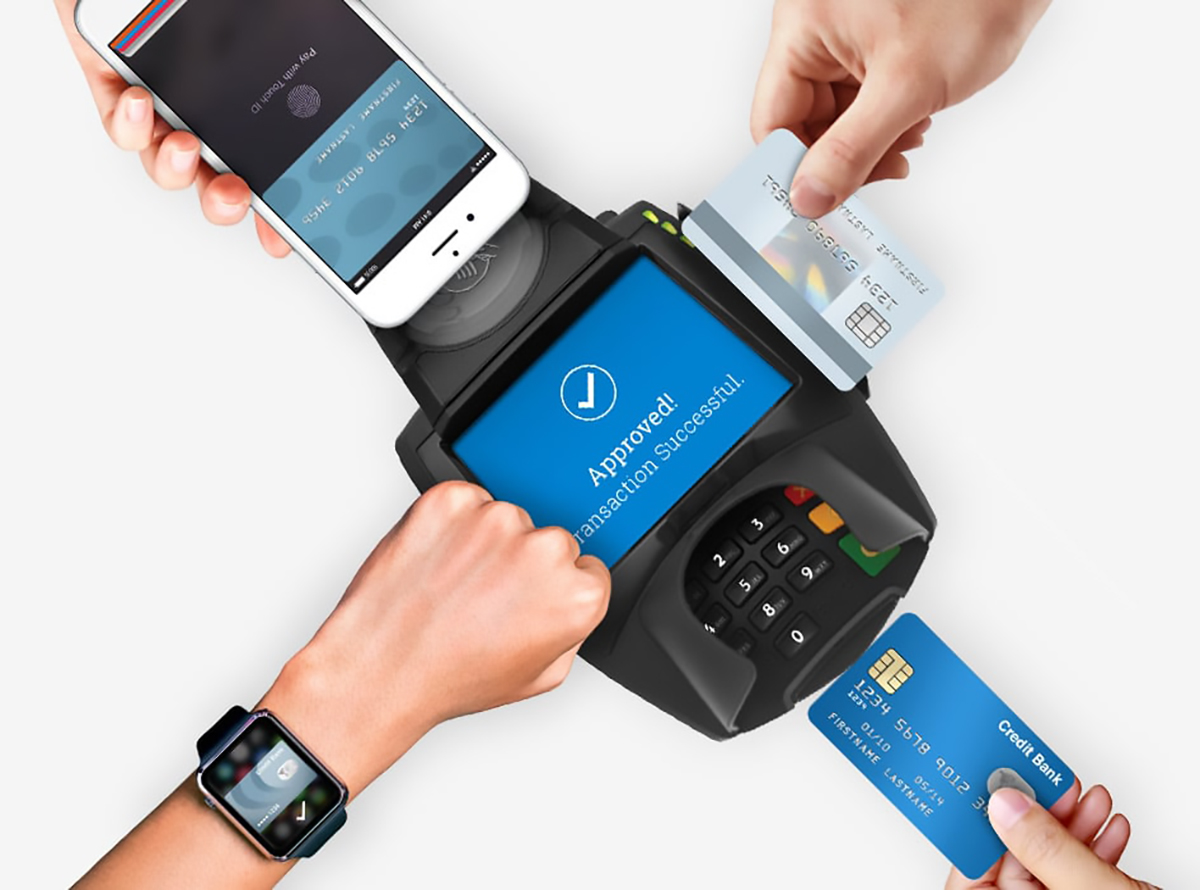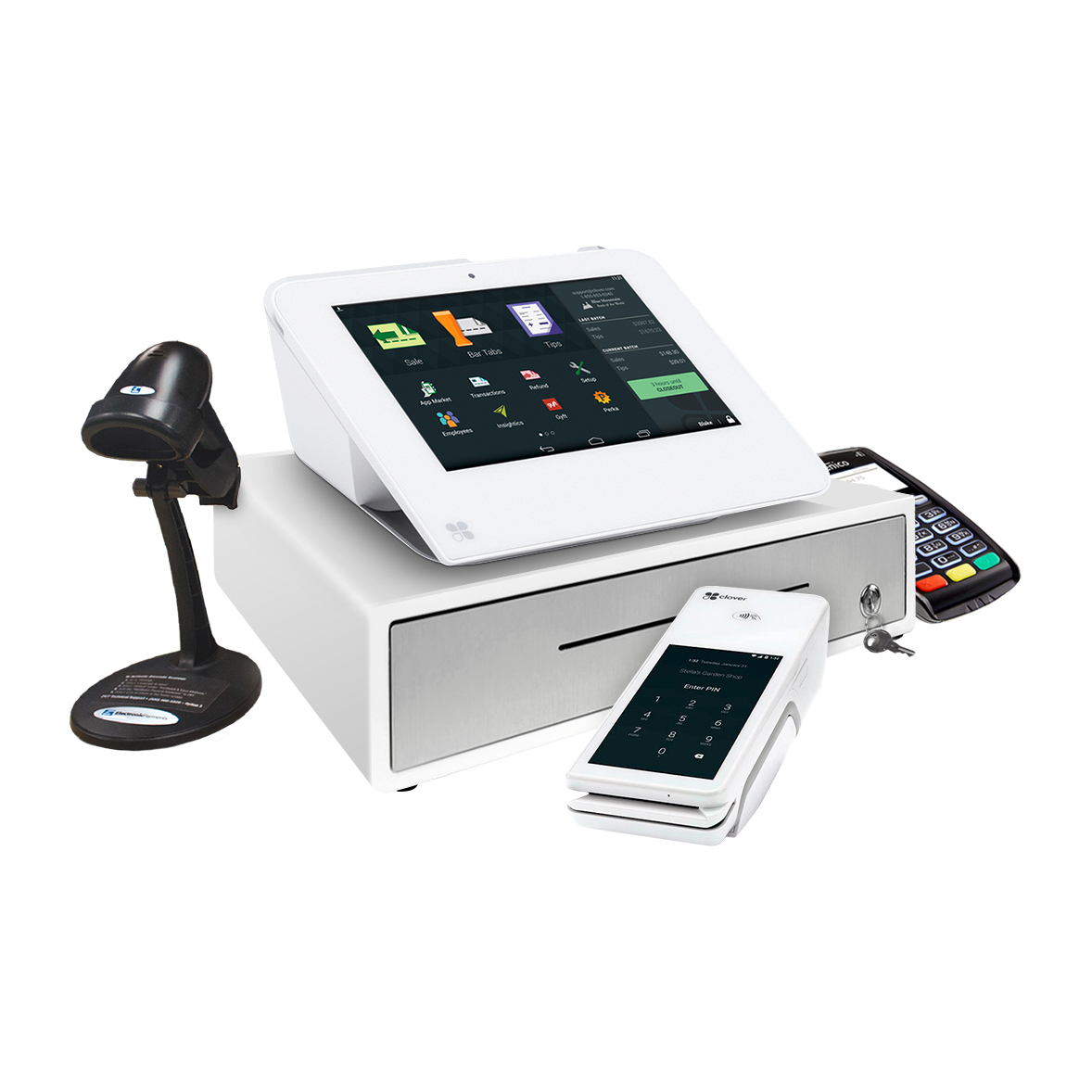Our cloud-based platform is so seamlessly integrated you would think it was part of your accounting software.




Reconcile Invoices with QuickBooks in real time

Understanding Invoice Reconciliation in QuickBooks
As a financial expert with over 20 years in the industry, I've seen firsthand the transformative power of real-time reconciliation in QuickBooks. This crucial feature assists businesses in maintaining accurate financial records, minimizing errors, and enhancing cash flow management. By automating the reconciliation process, QuickBooks allows users to reconcile invoices with QuickBooks in real time, providing up-to-date financial insights.
Why Embrace Real-Time Invoice Reconciliation?
Real-time reconciliation offers significant advantages, including the ability to dramatically reduce discrepancies and errors. When you reconcile invoices with QuickBooks in real time, you ensure that every transaction is matched as it occurs. Count on our pros from POS Broker to walk you through the steps to get started.
Moreover, real-time reconciliation gives peace of mind by reducing the risk of invoice fraud and duplicate payments. Businesses benefit from enhanced credibility and stronger relationships with vendors and clients by demonstrating financial accuracy and reliability.
How to Reconcile Invoices with QuickBooks in Real Time
Achieving seamless invoice reconciliation requires a few strategic steps:
- Connect your bank accounts and import all transactions into QuickBooks.
- Regularly categorize transactions to maintain up-to-date records.
- Utilize QuickBooks' automatic matching feature to align invoices with corresponding payments.
- Review and approve matches, ensuring all reconciled invoices reflect accurate balances.
Why Might Reconciliation in QuickBooks Fail?
Despite its robust nature, reconciliation in QuickBooks can sometimes be challenging due to common issues such as bank feed errors or mismatched entries. Regular audits and verification against bank statements can help catch these hiccups early. If discrepancies persist, QuickBooks provides tools to adjust entries and correct balances, ensuring the reconciliation process remains accurate.
What Are Common Challenges in Reconciliation?
One frequent question from colleagues revolves around handling invoices in multi-currency situations. This complexity can lead to variances if exchange rates aren't applied correctly. QuickBooks, however, offers currency tracking tools and updates exchange rates in real-time, aiding accurate reconciliation in complex financial landscapes.
In my own experience, I've found that involving team members in the process can also streamline efforts. By delegating reconciliation tasks and using QuickBooks' collaborative features, businesses can efficiently reconcile invoices with QuickBooks in real time, ensuring team accountability and reducing the chance of oversight.
Tips for Successful Real-Time Invoice Reconciliation
- Set a regular schedule for reconciliation to keep your books current.
- Utilize QuickBooks' reporting features to spot trends and anomalies promptly.
- Always back up your data before making significant changes.
By following these best practices, you can maximize the efficiency of reconciling invoices with QuickBooks in real time. With diligence and the right tools, maintaining accurate financial records becomes not just feasible but straightforward.

The Advantages of Automated Reconciliation with QuickBooks
How Does Automated Reconciliation with QuickBooks Work?
- Integration of Accounts: First, connect your bank and credit card accounts to QuickBooks. This enables seamless data import.
- Data Synchronization: Automated reconciliation syncs bank transactions with corresponding records in QuickBooks.
- Matching Transactions: The system uses unique identifiers like amounts and dates to match transactions accurately.
- Error Identification: Any discrepancies or unmatched transactions are flagged for review.
- Adjustment and Confirmation: Make necessary adjustments and confirm the reconciliation to keep your books balanced.
Can Automated Reconciliation Save Your Business Money?
Enhancing Security with Automated Reconciliation
Addressing Common Misconceptions About Automated Reconciliation
- Misconception 1: Automation is overly complex and difficult to implement.
- Misconception 2: Businesses lose control over their financial processes.
- Misconception 3: Automated solutions are too expensive for small businesses.
Troubleshooting Automated Reconciliation Issues
- Check for bank feed updates to ensure recent transactions are imported.
- Review transaction dates and amounts to verify accuracy during reconciliation.
- Utilize QuickBooks' support or online forums for community-driven solutions and advice.
- Keep software and bank connection settings up-to-date to prevent syncing errors.
Smarter Payment Solutions with QuickBooks
Streamlining payment processes while cutting down on fees is critical for any business aiming to optimize its financial dealings. At The POS Brokers, our mission is to help you uncover the hidden potentials within QuickBooks, particularly through Level 2 and 3 Optimization with QuickBooks. This approach helps businesses save money by leveraging lower interchange rates specifically designed for B2B transactions. With over two decades in the industry, I've seen firsthand how businesses can transform their payment processing by strategically using QuickBooks features to their fullest.
One aspect often overlooked is the seamless integration of merchant services with QuickBooks. Ensuring everything connects smoothly--whether it's QuickBooks Online, Desktop, or POS--not only reduces potential tech hiccups but also enhances the overall payment experience. This can lead to real-time reconciliation, which helps keep your books accurate and up-to-date. It's like having a financial assistant who never clocks out, freeing you to focus on growing your business.
Moreover, the ability to create customized invoicing solutions allows businesses to craft invoices tailored to their brand image, enhancing professionalism and credibility. By using features like Biller Genie integration, you can automate billing, collections, and payment reminders, which simplifies the process and keeps cash flow consistent. These tools can encapsulate the essence of your business while optimizing how you manage payments with QuickBooks.
Leveraging Level 2 and 3 for Cost Efficiency
QuickBooks offers a powerful platform for reducing credit card processing fees through Level 2 and 3 Optimization. These levels provide more detailed data on transactions, such as tax amounts and line-item details. Such information allows businesses to access lower interchange rates--a benefit that can significantly impact your bottom line, especially in high-value B2B or government transactions.
To tap into these savings, you'll need merchant accounts and payment gateways capable of supporting Level 2 and 3 transactions. Investing in this infrastructure might seem daunting at first, but the rewards are worth it. Imagine cutting a hefty 1% off your transaction fees consistently. Over time, these savings accumulate into substantial financial gains.
In my experience, the secret to making Level 2 and 3 Optimization with QuickBooks work is meticulous data entry and regular system checks. Businesses need to ensure that the necessary transaction data is accurately captured and reported. This not only maximizes cost savings but also enhances data security, aligning with PCI compliance standards.
The POS Brokers specialize in finding merchant services and accounts that suit your business needs, ensuring you get the best rates without sacrificing operational efficiency. Our team provides expert guidance to navigate these optimizations successfully, allowing your business to thrive.
How Does QuickBooks Integration Enhance Your Financial Operations?
Integration with QuickBooks offers a treasure trove of benefits, particularly when it comes to payment processing. One of the frequently asked questions is how exactly this integration can enhance financial operations. In essence, QuickBooks becomes a hub for automating transactions and improving cash flow.
First, setting up QuickBooks Credit Card Processing Integration is a breeze. Once set up, your system can handle payments with minimal manual intervention, reducing the likelihood of errors. With this integration, payment data seamlessly flows into your accounting records, enabling real-time financial tracking.
Second, by automating invoicing and payment reminders, QuickBooks minimizes delays and ensures timely payments. It adds a layer of efficiency that's both time-saving and cost-effective. Businesses can issue detailed invoices, set recurring billing cycles, and even automate reminders--all while maintaining a professional image.
Automated Integration Checklist:
- Connect QuickBooks with your preferred payment processor.
- Set up custom invoicing templates aligned with your brand.
- Utilize Biller Genie for automated reminders and collections.
- Regularly update software to ensure compatibility and security.
Steps to Achieving Level 2 and 3 Optimization with QuickBooks
Attaining Level 2 and 3 Optimization with QuickBooks isn't just about having the right tools; it's about understanding how to use them effectively. Here's a step-by-step guide to get you started:
- Assess Your Current Setup: Review your existing payment systems to determine which features need upgrading to support Level 2 and 3 transactions. A thorough audit will reveal where improvements are necessary.
- Choose Suitable Merchant Services: Select a merchant account that aligns with your business operations. The POS Brokers can assist in finding the most cost-effective solutions tailored to your needs.
- Integrate Seamlessly with QuickBooks: Ensure your QuickBooks setup can handle enhanced data capture. This involves upgrading your payment gateway or terminal to accommodate detailed transaction information.
- Regular Maintenance: Consistently monitor and update your systems to keep up with evolving regulations and technologies. This includes running security checks to protect sensitive data and ensure compliance.
Can QuickBooks Really Reduce Payment Processing Costs?
Absolutely. I've seen numerous businesses benefit from integrating Level 2 and 3 Optimization with QuickBooks. A retail client of ours, handling large B2B transactions, managed to slash their credit card fees by 15% annually after implementing these optimizations. Not only did this result in considerable financial savings, but it also streamlined their operations, as they could automate processes that previously required manual intervention.
These savings aren't just anecdotal. By capturing detailed transaction data, businesses qualify for lower interchange fees--transforming how they manage costs. QuickBooks, paired with the right merchant services, facilitates these enhancements and makes them accessible to businesses of all sizes.

What is the process of reconciling invoices with QuickBooks in real time?
Reconciling invoices with QuickBooks in real time involves a few strategic steps to ensure your financial records are always up-to-date. First, you will connect your bank accounts to QuickBooks, allowing you to import all transactions seamlessly. Then, you should categorize transactions regularly to keep your records current and accurate. QuickBooks' automatic matching feature will help align invoices with corresponding payments, minimizing the chance of errors. Finally, reviewing and approving these matches ensures your reconciled invoices accurately reflect your financial position. Imagine the ease of having a real-time snapshot of your finances, enabling you to make informed decisions at a moment's notice. This approach not only streamlines your accounting tasks but also strengthens financial accuracy. Have you tried setting a regular schedule for reconciliation to maintain up-to-date accounts?
Why should businesses embrace real-time invoice reconciliation?
Real-time invoice reconciliation offers a wealth of benefits for businesses looking to maintain financial accuracy and efficiency. By reconciling invoices as transactions occur, you drastically reduce discrepancies and errors, ensuring that your financial data is always current. This practice enhances decision-making and financial forecasting, providing a solid foundation for your business strategies. Moreover, real-time reconciliation reduces the risks of invoice fraud and duplicate payments, thereby increasing your credibility with vendors and clients. It's like having an accountant on your team 24/7, watching out for potential pitfalls. As a business owner, you can shift your focus from constantly playing catch-up with your finances to proactively managing your business growth. How would an up-to-the-minute view of your finances change the way you run your business?
How can automated reconciliation with QuickBooks save your business money?
Automated reconciliation with QuickBooks is a game-changer when it comes to cost-saving for your business. By automating the reconciliation process, you significantly reduce the time spent on manual data entry and error correction. This efficiency translates to lower operational costs. Moreover, QuickBooks' integration with credit card processing can reduce expenses through negotiated lower fees and optimized transactions. I've seen businesses save substantial sums simply by leveraging these technologies, which not only improves cash flow but enhances work efficiency. Over time, these savings can be redirected towards growth initiatives, turning what was once a routine administrative task into a strategic advantage. How much time and resources could your business stand to save by automating some of your financial processes?
What are some common challenges faced during invoice reconciliation in QuickBooks and how can they be resolved?
Invoice reconciliation in QuickBooks, while generally straightforward, can sometimes encounter hurdles such as bank feed errors or mismatched entries. These issues often arise from discrepancies between your transactional data and bank statements. Regular audits of your reconciliation process, coupled with verification against your bank statements, can catch and correct these errors early. QuickBooks also provides tools for adjusting entries and reconciling balances, ensuring accuracy in your records. Imagine driving a car without regular maintenance--issues are bound to crop up. Similarly, consistent checks and balances in your financial processes help prevent minor issues from turning into significant problems. Have you considered what regular reconciliation checks might reveal about your financial processes?
What are some misconceptions about automated reconciliation with QuickBooks?
Many businesses hesitate to implement automated reconciliation with QuickBooks due to misconceptions--like the belief that it is overly complex or leads to a loss of control over financial processes. However, modern solutions are designed to be user-friendly, requiring minimal technical knowledge. Automation doesn't mean relinquishing control; rather, it enhances oversight by providing detailed, customizable views of your financial data. Imagine having a personal assistant that handles repetitive tasks, freeing you to focus on strategic activities. Plus, contrary to the belief that these solutions are expensive, they often lead to cost savings in the long run. Are there any areas in your business where you feel automation could offer similar benefits?
How does leveraging Level 2 and 3 optimization in QuickBooks contribute to cost efficiency?
Leveraging Level 2 and 3 optimization with QuickBooks can significantly reduce your credit card processing fees. These levels involve providing more detailed data on transactions, allowing businesses to qualify for lower interchange rates. For larger B2B or government transactions, this can mean substantial financial savings. Implementing this requires setting up merchant accounts capable of supporting these transaction levels, but the investment pays off with reduced fees. Picture this: consistently shaving a percentage point off your processing fees, leading to significant savings over time. It's like having a hidden lever to improve your bottom line without altering your core operations. Which areas within your payment processing might benefit from this optimization?
How can QuickBooks integration enhance your financial operations?
QuickBooks integration offers tremendous benefits by streamlining your financial operations and payment processing. Once integrated, QuickBooks automates transactions and improves cash flow by handling payments with minimal manual intervention. Payment data flows directly into your accounting records, allowing for real-time financial tracking. This integration enables automated invoicing, minimizing delays, and ensuring timely payments, giving you more control over your receivables. It's like having a finely-tuned engine running your back-office operations, allowing you to focus on growth rather than micromanaging mundane tasks. How might more efficient invoicing and payment systems impact your business performance?
Resources
- Internal Revenue Service (IRS) - The official website of the IRS provides valuable information on tax laws, forms, and regulations for individuals and businesses.
- NACHA - NACHA is a nonprofit organization that oversees the ACH network and provides resources on electronic payments and transactions.
- PCI Security Standards Council - The PCI Security Standards Council offers guidelines and resources for ensuring the security of payment card data.
- U.S. Small Business Administration (SBA) - The SBA website offers resources and support for small businesses, including financing options and educational materials.
- Board of Governors of the Federal Reserve System - The Federal Reserve's website provides information on monetary policy, banking regulations, and economic research.
Contactless Payments!
Ensure your safety with the convenience of contactless payments. Our wide range of devices offers seamless contactless payment options, along with mobile contactless alternatives for hassle-free curbside pickups and deliveries. Contact us today for further details and stay secure.
Chip Card
Swipe Card
Apple Watch
E-Check
NFC Phone
 Quick Tip
Quick Tip
38% of new business owners make the wrong choice when selecting a POS for their startup.
Let Us Help You Choose the Right POS System and Save You the Hassle!

Contactless Payments!
Stay safe with contactless payments. All of our devices have contactless payment options and mobile contactless options for curbside pickups and deliveries. Call now for more information.
Chip Card
Swipe Card
Apple Watch
E-Check
NFC Phone
Ready to talk to an advisor?
Complete the form or call us now to talk to a live representative.
“The POS Brokers are amazing. They answered all our questions and explained everything clearly.”
Retail Owner






Reviews
There are no reviews yet.